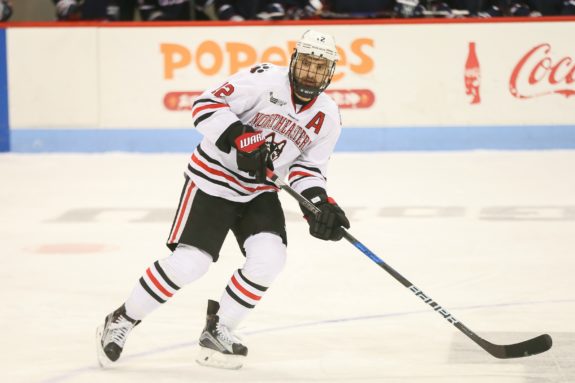In the first half of the season, the Pittsburgh Penguins sat in the bottom of the league on the penalty kill. The Penguins ranked 18th in the league at a kill rate of just over 80 percent from October to December. After the new year, however, they’ve seen serious improvement; since Jan. 1, they’ve ranked second in the league at an 86.6-percent kill rate.
The penalty killing unit is about to face a challenge, however, with the loss of penalty killer Ian Cole. He was dealt as part of the trade for centerman Derick Brassard. Brassard, while more than welcome as the third-line center the Penguins have been searching for all season, doesn’t kill penalties. Cole, on the other hand, was one of the Penguins’ main penalty killers, serving as a go-to option when the Penguins were forced to fend off a 5-on-3. His loss on the penalty kill, while not unfixable, will need to be addressed by the Penguins going into the last stretch of the season.
Looking at Cole’s Role
Cole may have filled a bottom-pairing role at even strength for the Penguins, but when the team was shorthanded, he was one of coach Mike Sullivan’s first choices.
He was one the Penguins’ most reliable and most used penalty killers. He was part of the core group that played over two minutes a night while shorthanded. Out of that group of core killers, including Riley Sheahan, Kris Letang, Brian Dumoulin, Carl Hagelin, Carter Rowney, Tom Kuhnhackl (currently injured) and Matt Hunwick (a frequent scratch prior to the Cole trade), Cole maintained the best possession of the puck while on the ice. He had the highest short-handed relative Corsi of any regular penalty killer on the team and was the only player with a positive possession statistic while shorthanded other than Letang.

So replacing Cole is something that needs to be addressed. Luckily for the Penguins, it’s not impossible to replace him without killing the team’s penalty-kill percentage. Although he had a positive impact on the penalty kill, he didn’t singularly dictate its level of success. The penalty-kill success rate during the seven games he was scratched at the beginning of January compared to the 11 games he played after returning to the lineup is enough to prove that.
In the seven games he was scratched, the Penguins killed 88.2 percent of their penalties, and in the 11 that they played after he returned, they killed 78.1 percent. That’s not to say that Cole made the kill worse, just that the success rate depends on more than just a single— albeit very good— shot-blocker. So to whom will the Penguins turn to fill in for his ice time while shorthanded? The team has a few options available.
Related: Ian Cole Belongs in Penguins’ Top-Six
Penguins’ New Penalty Killers
Here’s a look at the penalty killers who average minutes just under what Cole’s were who could theoretically fill in for his role.
One is Carter Rowney, who has been filling in as the Penguins’ fourth-line center but will theoretically be moved to wing with the arrival of Brassard (bumping Sheahan down to be the new fourth-line center) and the departure of former fourth-line winger Ryan Reaves. He has displayed very similar penalty-killing minutes and shot-blocking abilities to Cole, although unlike Cole, he possesses the team’s worst possession statistics while shorthanded.

Another option is Tom Kuhnhackl, who has been out of the lineup with an injury since Feb. 6. Presuming Kuhnhackl makes the roster when he returns from injury, he would be a relatively good choice to replace Cole’s role on the penalty kill. He’s a fearless shot-blocker and maintains decent possession of the puck while shorthanded, better than Rowney or than Cole’s replacement in the lineup, Matt Hunwick. Upping his minutes once he returns could help fill the hole on the kill. Hunwick is also likely to see increased minutes on the PK without Cole, especially with Kuhnhackl still injured.

Other options for the Penguins include introducing new players as regulars on the penalty kill. Jake Guentzel, for example, is occasionally used to kill penalties; his role could be expanded. Zach Aston-Reese was known for his shorthanded play as a Northeastern star player; in fact, when first talking about his future role on the team, Sullivan said that “we can use him killing penalties.” Both players have already seen some shorthanded ice time this season. Introducing either of these forwards to more time on the penalty kill could help divide up the ice time that normally would have been eaten up by Cole.
Related: Senators Trade Brassard to Penguins
Penguins’ Future PK
The Penguins will need to address the loss of Cole while shorthanded, and that might involve introducing some new players like Guentzel or Aston-Reese to the penalty kill. With some time still left before the trade deadline, we’ll see if the Penguins make a move that happens to address this flaw in the lineup; if not, they can find answers by dividing up shorthanded ice time between players already on the roster.